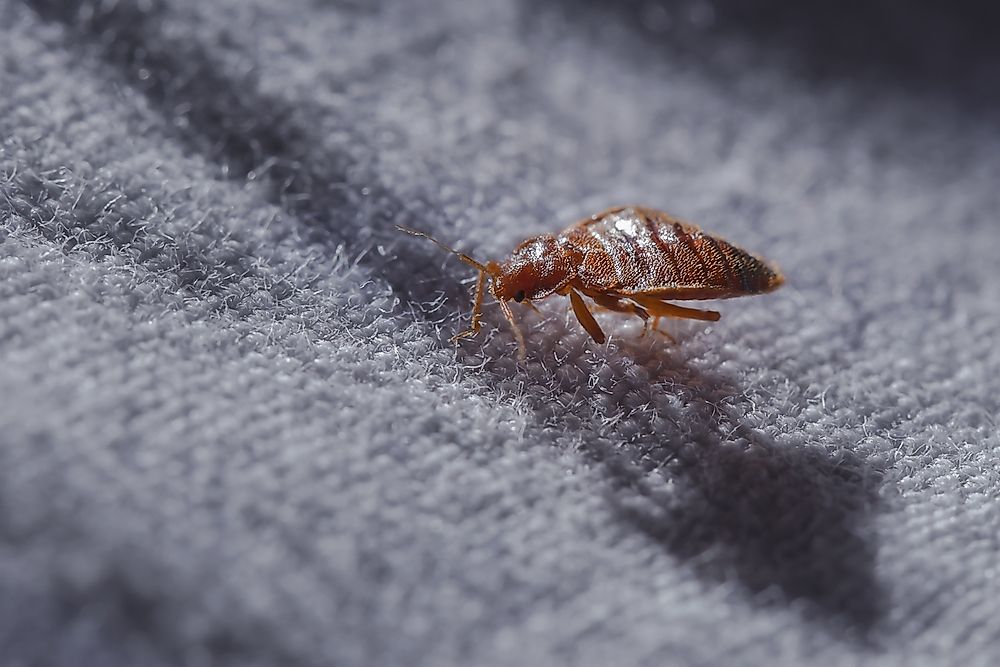Typically, bed bugs are 3/16 inch long, red to dark brown in color, and are mostly nocturnal insects that come out of hiding to take blood meals from sleeping, humans. These pests are hematophagous, which means blood is their only food source. They can travel from place to place with ease, clinging to items such as luggage, purses and other personal belongings.
Over the last year, as travel began to resurge in the U.S., restless Americans — and bed bugs — were hitching rides across the country for a getaway. As consumers plan for travel in 2022 amid the evolving pandemic, it’s easy to forget that bed bugs are still very much a threat. Taking into consideration the staffing shortages associated with the hospitality industry, it might be the case that bed bug introductions are not being monitored as often as desired, which is why a diligent examination is key.
“Bed bugs are a concern for everyone because they are master hitchhikers, traveling home with people when they likely don’t realize it,” said Ben Hottel, an entomologist. “Their nature of hiding in difficult-to-find cracks and crevices can make them hard to control, which is why involving a trained professional at the sight of an introduction is recommended.”
Bed bugs are known for rapid population growth. Females can deposit one to five eggs a day and may lay 200 to 500 eggs in their lifetime. They can survive for several months while waiting for their next blood meal, so they’re likely to emerge when a food source, e.g., humans, become available.
“Unfortunately, many hospitality businesses are facing staffing shortages, and while the industry remains committed to cleanliness, now more than ever, travelers should be mindful of bed bug sightings and proactive in inspection efforts.”
The list is based on treatment data from the metro areas where a pest control service performed the most bed bug treatments from December 1, 2020 – to November 30, 2021. The ranking includes both residential and commercial treatments.
The List naming the worst cities in the United States when it comes to bed bugs:
- Chicago
- Philadelphia (+12)
- New York (+9)
- Detroit
- Baltimore (-3)
- Indianapolis (+1)
- Washington, DC (-4)
- Cleveland, OH (-2)
- Columbus, OH (-4)
- Cincinnati (-2)
- Grand Rapids, MI (-1)
- Los Angeles (-3)
- Champaign, IL (+2)
- Atlanta (-1)
- Charlotte, N.C. (-4)
- Dallas-Ft. Worth
- Denver (+3)
- St. Louis, MO (+7)
- San Francisco (+3)
- Pittsburg (-1)
- Greenville, S.C. (+2)
- Charleston, W.V. (-4)
- Flint, MI (-2)
- Raleigh, N.C. (-7)
- Norfolk, VA (-1)
- Richmond, VA
- Omaha (+3)
- Buffalo, N.Y. (+1)
- Knoxville (+7)
- Cedar Rapids, IA (+5)
- Toledo, OH (-4)
- Dayton, OH (-4)
- South Bend, IN (+8)
- Nashville (-3)
- Davenport, IA (+3)
- Ft. Wayne, IN (-3)
- Youngstown (+3)
- Milwaukee (-6)
- Miami (+8)
- Tampa (-1)
- Houston (-4)
- Harrisburg (new to list)
- Greensboro, N.C. (-9)
- Seattle
- Peoria, IL (+4)
- Orlando (-1)
- Lexington, KY (-4)
- Lansing, MI
- Louisville, KY (-3)
- Lincoln, NE (new to list)
Pest control companies recommend:
- Survey the hotel room for signs of an infestation.
- Be on the lookout for tiny, ink-colored stains on mattress seams, in soft furniture and behind headboards.
- Lift and look in bed bug hiding spots: the mattress, box spring and other furniture, as well as behind baseboards, pictures and even torn wallpaper.
- Elevate luggage away from the bed and wall. The safest places are in the bathroom or on counters.
- Examine your luggage carefully while repacking and once you return home from a trip. Always store luggage away from the bed.
- Place all dryer-safe clothing from your luggage in the dryer for at least 15 minutes at the highest setting after you return home
